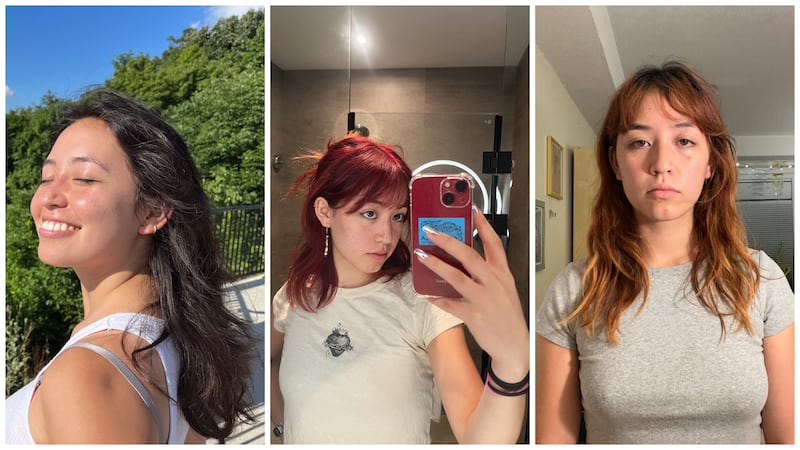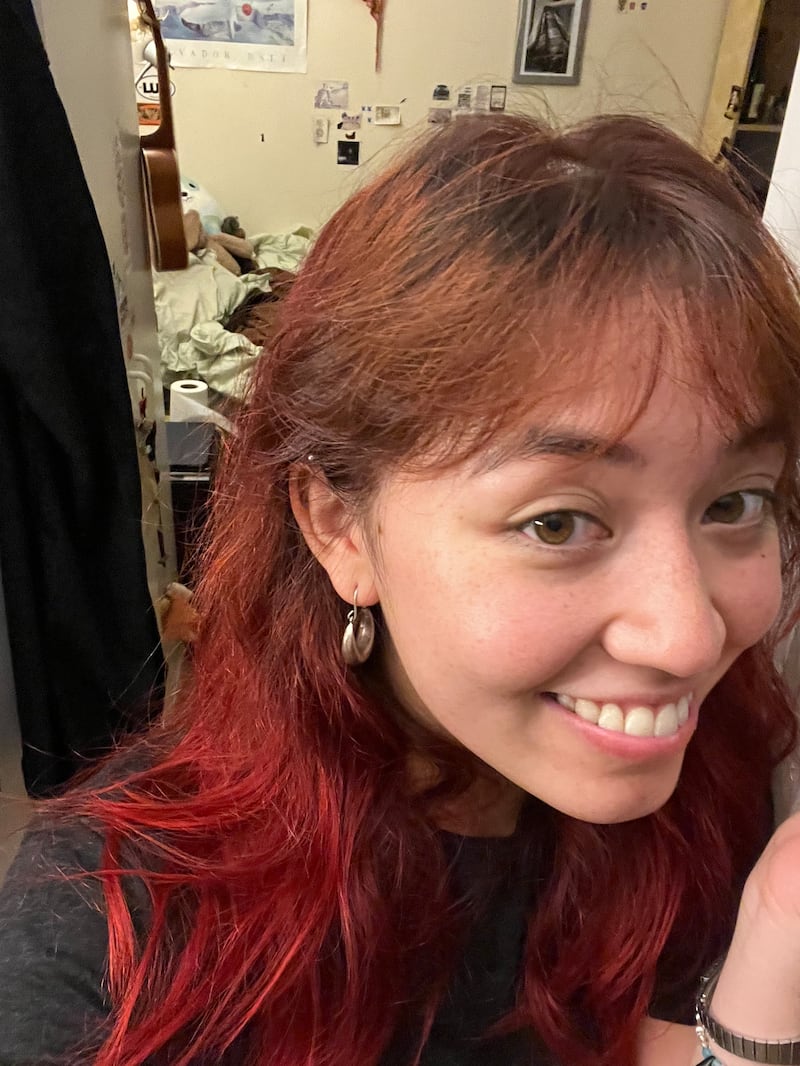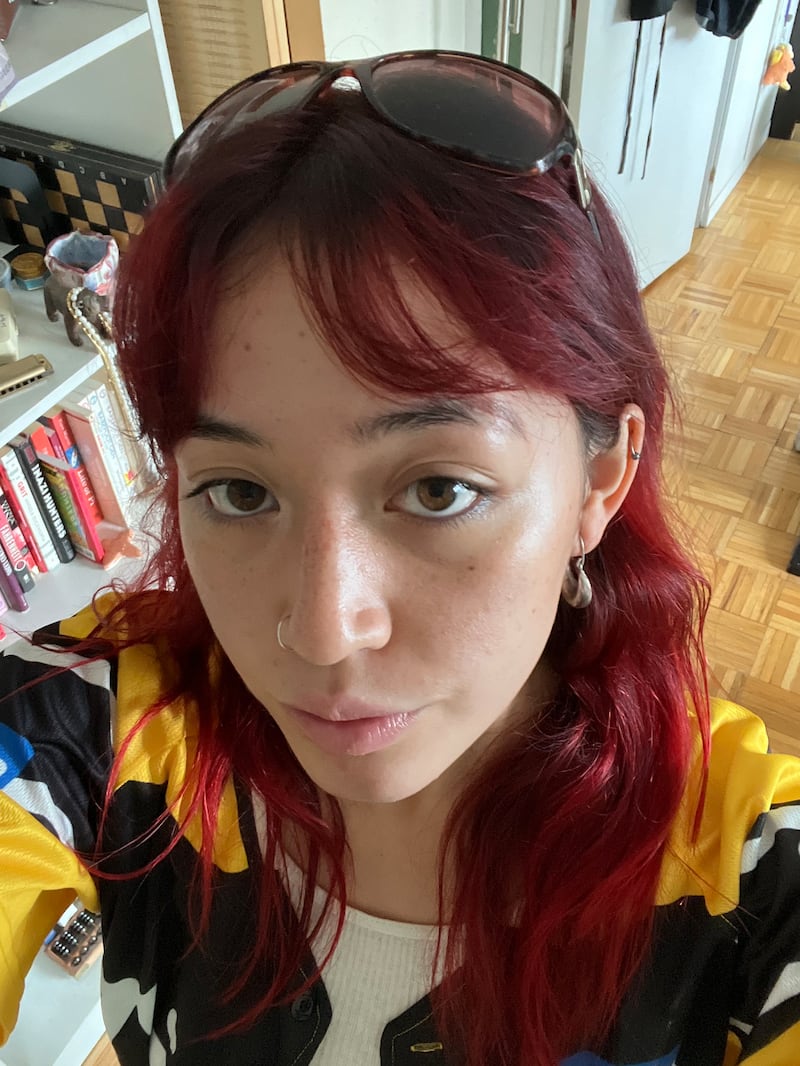Red is my color. Or so I’m told. Maybe I’ve simply conditioned friends to associate me with red because I’ve dyed my hair for the past three years. It’s a blessing and a curse to have colored hair; sure, people can recognize me from a mile away, but “having a brand” requires maintaining said brand, and I’ve spent a pretty penny on my copper shade.
To mitigate the cost, I usually visit a budget-friendly salon in my neighborhood. They’re reliable, but, as my haircare hobbyist friend told me, they may have done unnecessary damage. Every time I got my roots touched up, they ended up re-dyeing my entire head, typically using a potent developer to lighten it. It gets results, but it results in my ends having both the color and texture of straw four to six months later.
What’s a budget-conscious, naturally curious New Yorker to do? I started coloring it myself.

Challenge Accepted
It’s not easy to dye dark hair. My hair is thick and nearly black, making it a tricky task to find the right chemistry that will lighten it enough to deposit color without causing damage.
In the name of treating my hair better, I visited a more expensive salon where one of the stylists previously worked in-house at a luxury department store’s fancy salon. I spent over $120 for my hair to look basically the same as it did before I sat in the chair.
I can’t blame my stylist too much; I made the same mistake when I dyed my hair at home for the first time. After some online research, I decided to use a gentle 20-volume developer, which did absolutely nothing for my dark Asian hair (thanks, Google!). But hey, at least I didn’t damage it.
I decided to try dyeing my hair at home again. Professionals in salons, and hairstylist Brad Gesimondo, known as Brad Mondo on YouTube, especially, did everything in their power to convince me not to. But the appeal of controlling what went in my hair and saving money—or rather, wasting it on something else—was too strong.
I enlisted the help of my hair hobbyist friend and spent a wild Friday night touching up my roots in her apartment.
Take Two
We used Manic Panic Semi-Permanent Hair Color Cream in Rock ‘N Roll Red ($14, Manic Panic) to deposit more color and protect my yellowing ends. Then, we applied a 30-volume developer to my roots before using L’Oreal HiColor Permanent Hair Color ($13, Sally), which is specifically formulated for coloring dark hair. After processing for 30 minutes, voilá: I looked unhinged.

The ends of my hair were so red, it looked like I had made bootleg extensions from Ronald McDonald’s hair clippings. My roots were nearly unchanged, except that if you scrutinized my scalp very carefully in good lighting, you could see a maroon tint.
I biked home, telling myself lies. “It looks punk,” I thought to myself. “Ombré can come back in style.” At the very least, bad choices make good stories, and I could write about it in an article on how they were right—you’ll regret dying your hair at home and should leave it to the professionals.
Third Time’s the Charm
The next day, I woke up with a newfound determination. I still had half a jar of Manic Panic left, and I slathered it on my dull roots. Then, I took a long, cold shower, using the Ion Color Defense After Color Sealer ($13, Amazon) hair mask. I was brimming with anxiety as crimson-colored water pooled at my feet, partially because I was afraid the dye would stain the bathroom tile, leaving me with a permanent reminder of my hubris. (By the way, it will indeed stain your bathroom, your pillows, and everything you wear for the next few weeks if you’re not careful and dry your hair thoroughly.)
But once I stepped out of the shower and dried my hair, my fears evaporated along with the moisture. It looked good. Really good.

The excess dye that made me manic and panicked had washed out, and it toned my roots nicely. There was still a difference between the color of my roots and my ends, but it was subtle, and could maybe even seem intentional. Was it perfect? Of course not. But neither am I.
There is something incredibly empowering about doing your hair yourself. Finally, I was free from my salon dependence, and, more importantly, I gained a deeper understanding of my hair.
The Bottom Line
This is my biggest takeaway from my harrowing hair journey. Even if I don’t exactly know what works for my hair yet, I know what doesn’t. And, for the most part, I protected my follicle health and my credit score. As for practical advice, here are the most valuable tips I’ve found:
- Do a lot of research. Your hair health (and your mirror) will thank you.
- Cover your surfaces. It will stain, and you will not get your deposit back.
- Don’t be afraid to make multiple attempts. If I’d stuck with the results from my first or second hair-dye trials, I’d still look like Mr. McDonald.
If you’re struggling to DIY your hair, you can always turn to a professional. (They’re professionals for a reason, after all.) In the worst-case scenario, I could’ve gone to a salon to fix my hair, which is what I would’ve done once more anyway if I hadn’t embarked on my series of homemade dye-job experiments in the first place.
Anyway, it’s just hair. It’ll grow back.
The post How I Fixed My Hair Color After a ‘Ronald McDonald’ Dye Job Left Me in Tears appeared first on The Daily Beast.




